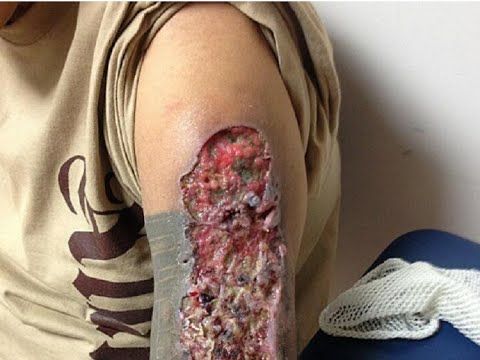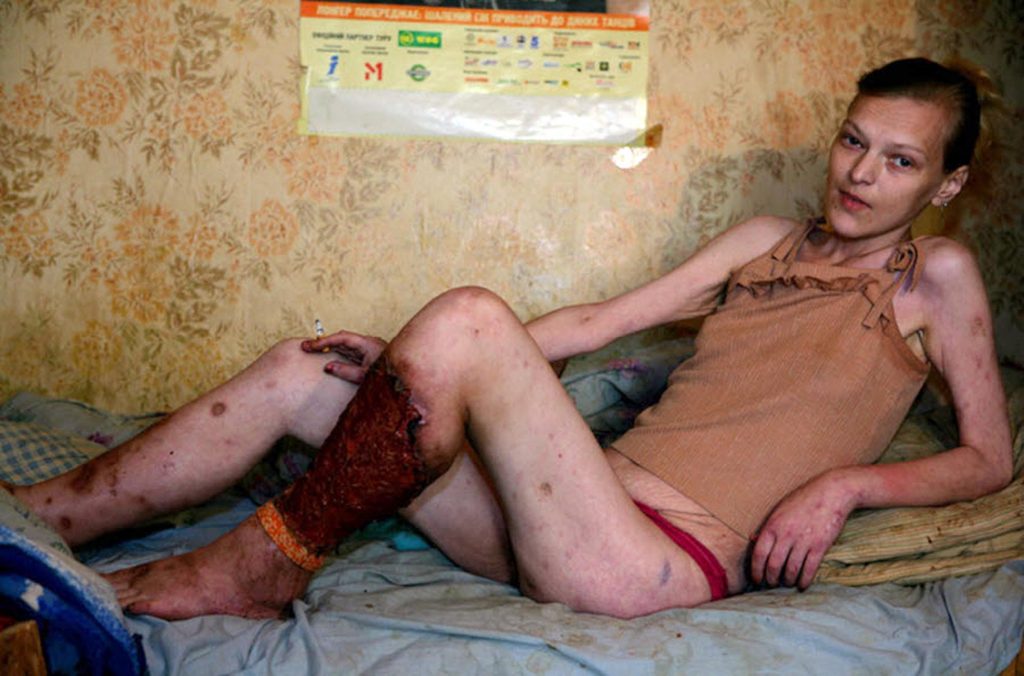Many say the war on drugs is simply unwinnable. As governments increase measures and tactics to combat the flow of drugs, pushers simply create more ingenious ways to work around them. A prime example of this is the infamous drug Krokodil, the users of which can often be seen lying on the ground in bad areas of the former Soviet Union, trouser leg pulled up to reveal rotting flesh and begging for change. Around the world, the drug has taken on an almost urban myth aura. This is its true story.
In 2003, the government of the Russian Federation began a huge crackdown on the enormous amounts of heroin being trafficked into the country and across the former Soviet Union. As heroin became increasingly difficult to obtain, Russians turned to making a discontinued historical drug in their own homes. The drug would become known as Krokodil, but its original name is Desomorphine, a semi-synthetic opioid with powerful, fast-acting effects like sedation and analgesia.
Desomorphine was first discovered by a German team in the 1920s and was later used in the USA and Switzerland with the brand name Permonid. Back then, it was ten times stronger than doses of morphine and described as having a fast onset and a short duration of action, with relatively little nausea compared to morphine. However, in 1981 it was discontinued due to a large number of side effects such as hypotension and urinary retention, which many believed outweighed any of the drug’s advantages.
The drug appeared again in Siberia in the wake of the 2003 drugs crackdown in Russia, albeit being homemade. This time it was going by the Russian nickname Krokodil, which translates to crocodile in reference to the horrific skin damage the drug can cause, which resembles a crocodile’s leathery skin.
Desomorphine can be made at home from items easily bought over the counter at the abundance of pharmacies in Russian cities. Its basic components are codeine, iodine and red phosphorus from match strikers. However, this homemade process is often always guaranteed to result in the drug being contaminated with various agents.
The drug soon spread across Russia and the former Soviet republics, with multiple cases reported in Ukraine and amongst Russian ex-pat communities in other countries. Western European countries such as Spain and the United Kingdom have also had a few cases.
The results of homemade Desomorphine, often made in a dingy Soviet-era apartment, are generally horrific and resemble something from a horror movie. During the production process, Addicts have been known to use readily available solvents such as battery acid, gasoline or paint thinner to bolster the final product, which is guaranteed to be far from pure with no effort made to remove toxic leftovers or contaminants. The drug is usually injected, resulting in gruesome damage to the skin, blood vessels, bone and muscles. Many long term users often suffer multiple amputations as the drug simply eats through the user’s flesh.
The drug gained its nickname through the characteristic flesh-eating damage it left behind. Addicts often will miss the vein when injecting, thus creating an abscess and subsequent death of the flesh surrounding the entry-point. As well as Krokodil, it’s been known as the zombie drug or the flesh-eating drug. Users’ bodies are often defined by gangrene, blood clots, pneumonia, meningitis, blood poisoning, bone infections, liver and kidney damage, brain damage, and HIV.
In summary, don’t do drugs, kids. And certainly not Russian drugs.



